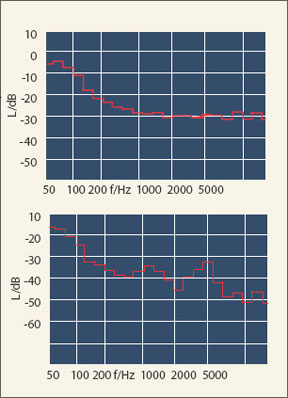Following our report on active noise reduction headsets in the May issues, the e-mails trickled in. With all those expensive lab tests, why the heck didnt you guys publish good numbers on noise reduction values? a couple of readers asked. After all, manufacturers do this. Well concede the point, but its not as simple as that. Noise reduction value for ANR headsets is a complex subject and although we collected the data necessary to describe it, doing so in a way useful to readers proved all but impossible in the limited space allotted for the article. And frankly, even with more space, were not sure a detailed essay on noise reduction would be especially useful for a buyer making a decision about which headset to buy. At best, this data can be meaningless to a non-technical reader; at worst, it could be flat-out misleading. Noise reduction can be measured quantitatively and we did that in the lab, but whats most important in noise reduction is how the user perceives it and this varies considerably with frequency. There’s a phenomenon known to audiophiles as the psychoacoustic effect. This merely means that we might perceive something to sound different than black-and-white measurements might suggest. The brain interprets the sound and presents an experience to us rather than a simple observation. (Psychoacoustic effects were quite obvious during our focus panel airborne tests of both types of headsets, which is why we attempted to smooth these variable observations with a sliding scale which we then averaged.) Heres a thought test. Shown here are two color samples. Which color is brighter? We can measure these two color patches and we can analyze their reflectance across the spectrum of visible wavelengths. With those measurements, we can produce absolutely accurate technical data explaining which is brighter. What those measurements cant tell you, however, is how bright those two color patches seem to the human observer. The same is true of noise reduction. The manufacturers have led us to believe there’s one simple number that represents noise reduction. Maybe that number came from the engineers, but its just as likely that it came from the marketers. The truth of that single number is as meaningful as our technical measurement of color brightness. Accurate, perhaps – meaningful, no. Passive headsets attenuate high frequencies effectively, while ANR circuitry effectiveness is typically limited to lower frequencies. Thats good for the ANR design, because the psychoacoustic impression is “better” with low-frequency attenuation than with equivalent – or even superior – high frequency attenuation. Our brains tell us a headset with better low frequency attenuation is quieter. We simply hear the headsets signal better as a result. Consider these two graphs above. The headset on the top exhibited good passive performance but minimal ANR performance. The one on the bottom had inferior passive performance, but excellent ANR performance that was perceived to be much quieter to the panel. (Note that the data in these two graphs is absolute and has not been normalized. The shape is relevant; the value at a given point is not relevant without normalization.) If we were to display these two graphs – or worse, a single numerical value – without extensive documentation to qualify and normalize frequency considerations, most readers would conclude that the headset on the top is better. Yet an airborne test might very likely reveal the opposite. Bottom line: In reducing the data from our extensive lab tests, it simply wasnt practical to present the raw data and then provide an excerpt of a length no less than a doctoral dissertation qualifying and explaining the graphs. Our solution to this was to examine and interpret the data as broadly and as simply as practical, then reduce this to a single discernible value that we think has meaning to a reader. We used a three-point scale of poor, fair and good, but we could have just as easily favored a one-to-five or a one-to-10 scale, as we did with our headset flight trials. But wait, you might ask, whats the sense of lab tests then? Technical testing is simply one piece of the puzzle in judging a complex product such as a headset. Lab testing is the proverbial level playing field which tells us in largely unambiguous terms what the engineers considered important when they designed the headset. Theyre a good starting place for comparative evaluation, but they arent necessarily the ending place.






